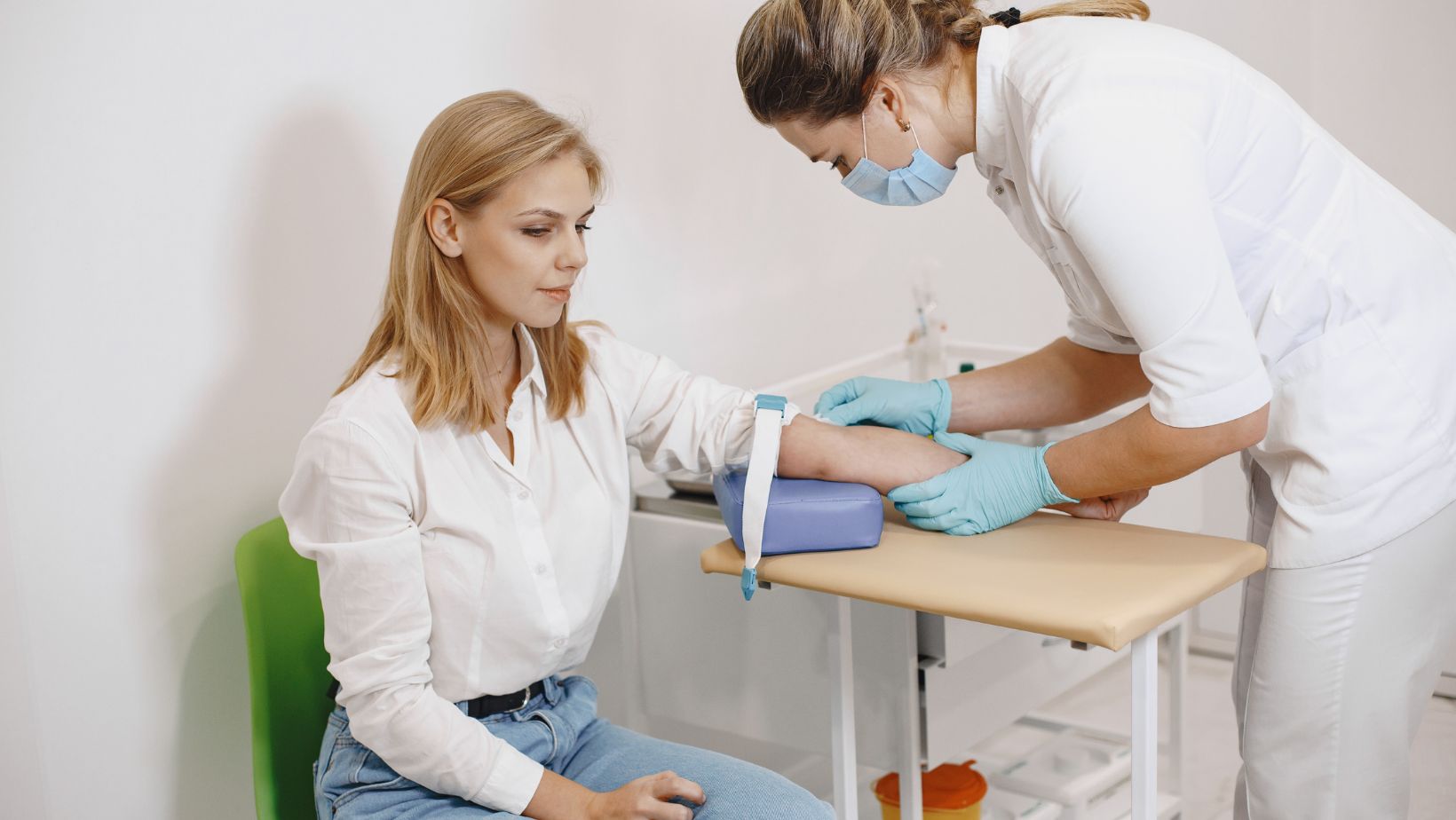Postural Orthostatic Tachycardia Syndrome (POTS) is a condition characterized by an abnormal increase in heart rate when transitioning from lying down to standing up. This heightened heart rate, accompanied by symptoms such as dizziness, fatigue, and palpitations, can significantly impact daily life. While POTS can be challenging to manage, understanding and implementing effective strategies can help alleviate symptoms and enhance overall well-being.
Although there is no definitive cure for POTS, various approaches and products are available to help manage its symptoms. By adopting a combination of lifestyle changes, dietary adjustments, and supportive tools, individuals with POTS can achieve a better quality of life and mitigate the daily challenges posed by the syndrome.
Understanding POTS and Its Challenges
Postural Orthostatic Tachycardia Syndrome (POTS) is a form of dysautonomia, a disorder that affects the autonomic nervous system. The primary hallmark of POTS is a significant increase in heart rate, often by 30 beats per minute or more, when a person moves from a lying down to a standing position. This condition disrupts the body’s ability to regulate blood flow, leading to symptoms like dizziness, lightheadedness, palpitations, and extreme fatigue. Additionally, individuals with POTS may experience hypertonic pelvic floor muscles, which can contribute to urinary dysfunction and pelvic discomfort.
People with POTS may also experience brain fog, nausea, headaches, and even fainting spells. These symptoms often worsen after long periods of standing or when engaging in activities that involve sudden posture changes.
Daily Challenges Faced by POTS Patients
Living with POTS presents a variety of physical and mental challenges. One of the most difficult aspects is managing the inability to stand for extended periods, as doing so can quickly lead to dizziness, lightheadedness, or even fainting. This makes everyday tasks like cooking, shopping, or standing in line highly taxing. Many individuals with POTS also struggle with chronic fatigue, which can make it difficult to keep up with work, school, or social engagements.
Mentally, the unpredictability of symptoms can lead to stress and anxiety, especially when trying to maintain a regular routine. Additionally, the physical limitations imposed by POTS may contribute to feelings of frustration or isolation. Overall, patients often need to balance energy conservation with symptom management to get through daily activities.
Lifestyle Changes to Help Manage POTS Symptoms
Managing Postural Orthostatic Tachycardia Syndrome (POTS) requires a combination of lifestyle adjustments that can help alleviate symptoms and improve overall quality of life.
1 – The Importance of Hydration
Proper hydration is crucial for managing POTS symptoms, as it helps support blood volume and circulation, which are often impaired in individuals with the condition. Without adequate hydration, POTS patients may experience worsening symptoms such as dizziness, fatigue, and rapid heart rate. By maintaining a steady intake of fluids, individuals with POTS can better regulate their blood flow and alleviate some of the more debilitating aspects of the condition.
Staying Hydrated Throughout the Day
Drinking plenty of fluids throughout the day, especially electrolyte-rich drinks, is essential for managing POTS symptoms. Electrolytes, such as sodium and potassium, help retain water in the bloodstream and maintain proper hydration levels, which can prevent the blood pressure drops that trigger symptoms like dizziness and lightheadedness. Water alone is helpful, but electrolyte supplements or drinks such as sports drinks, coconut water, or oral rehydration solutions can offer even greater benefits. Spacing out fluid intake evenly throughout the day ensures consistent hydration, which is critical for symptom management.
2 – Incorporating Regular Physical Activity
Engaging in regular physical activity is an effective way to improve circulation and strengthen the cardiovascular system, which can help alleviate some of the symptoms associated with POTS. While exercise can be challenging for individuals with POTS due to fatigue and dizziness, certain low-impact activities can gradually enhance endurance and improve blood flow without triggering excessive strain on the body.
The Role of Exercise in Symptom Management
Low-impact exercises like swimming, cycling, or yoga are particularly beneficial for people with PTSD. These activities allow patients to remain in a horizontal or seated position, reducing the strain that comes from standing exercises while still providing cardiovascular benefits. Swimming is especially effective because the water provides natural support, preventing blood from pooling in the lower extremities. Gentle yoga and stretching can also help improve muscle tone and circulation, making it easier for the body to regulate blood flow. Incorporating exercise slowly and steadily, under the guidance of a healthcare professional, can lead to improved symptom management over time.
3 – Dietary Adjustments for POTS
Diet plays a key role in managing POTS symptoms, and certain adjustments can help improve the body’s ability to regulate blood pressure and circulation. One of the most important changes for many POTS patients is increasing their salt intake, as salt helps retain fluid in the body, which boosts blood volume.
Salt Intake and Diet
For individuals with POTS, increasing salt intake is often recommended to help improve blood pressure and blood volume, both of which are essential for reducing symptoms like dizziness and fainting. Foods high in salt, such as pretzels, salted nuts, or pickles, can be incorporated into daily meals to help maintain proper sodium levels. However, any increase in salt intake should be done under the supervision of a healthcare provider, as too much salt can lead to other health complications.

In addition to salt, maintaining a balanced diet with a focus on nutrient-dense foods like lean proteins, vegetables, and whole grains is essential for overall health and energy levels. Eating small, frequent meals rather than large ones can also help prevent blood pressure drops after eating, which is a common issue for POTS patients.
Practical Tips for Managing POTS at Home
Creating a Comfortable Home Environment
Managing POTS at home starts with creating a space that supports your physical needs. Since standing for long periods can exacerbate symptoms like dizziness and fatigue, ensuring that your home is equipped with comfortable, supportive furniture can make a significant difference.
Furniture and Positioning
Investing in ergonomic seating options, such as recliners or chairs with good back and neck support, can help reduce the strain of sitting upright for extended periods. Adjustable seating, such as a reclining sofa or zero-gravity chair, allows you to change positions easily without having to stand. Having seating in key areas of your home—like the kitchen, bathroom, and bedroom—can also prevent the need to stand for long periods, minimizing the risk of lightheadedness or fainting. Footrests and cushions can further promote comfort and improve blood flow to the lower extremities, reducing symptoms related to blood pooling.
Using Mobility Aids for Better Support
For individuals with POTS, fatigue and dizziness can make it difficult to move around the home safely. In some cases, using mobility aids can provide better support and help prevent falls or other injuries. These tools not only enhance physical stability but also reduce the energy exerted while walking or standing, allowing you to conserve energy and focus on symptom management.
When to Consider Mobility Assistance
If you find it challenging to walk or stand without experiencing severe dizziness, fatigue, or instability, mobility aids like canes, walkers, or even rollers can be a helpful solution. Canes provide basic support and stability, making them a good option for short distances or when you need occasional assistance. Walkers and rollators, equipped with wheels or seats, offer more substantial support and are ideal for navigating longer distances or when you need a place to sit and rest frequently. These aids can be especially useful for getting around the house or going outside for brief errands, allowing for greater independence while managing POTS symptoms.
How Environmental Factors Affect POTS Symptoms
Understanding how Environmental Triggers for POTS symptoms and utilizing helpful products can significantly enhance your ability to manage the condition effectively.
Recognizing and Managing Environmental Triggers
For individuals with POTS, certain environmental factors can significantly impact symptoms. Learning to recognize and manage these triggers is an essential part of symptom management. Heat, cold, and humidity are common environmental triggers that can exacerbate POTS symptoms, making it crucial to maintain a controlled environment.
Temperature and Humidity Changes
Heat is one of the most challenging environmental factors for people with POTS. High temperatures cause blood vessels to dilate, which can lead to blood pooling in the lower extremities and worsening symptoms like dizziness, fatigue, and even fainting. On the other hand, cold weather can cause blood vessels to constrict, limiting circulation and exacerbating symptoms such as cold extremities and fatigue. Humidity can also increase heart rate and make it harder for the body to regulate blood pressure, leading to worsening symptoms.
To manage temperature and humidity triggers, it’s helpful to use air conditioning or fans in warmer weather, dress in layers during cold spells, and avoid prolonged exposure to extreme conditions. Staying indoors during peak heat or cold and keeping humidity levels in check with dehumidifiers or humidifiers can also help mitigate these environmental effects.
Helpful Products to Ease POTS Symptoms
1 – Compression Garments
Compression garments are a vital tool for people with POTS, as they can help improve circulation and reduce symptoms caused by blood pooling. By applying gentle pressure to the legs, these garments support the movement of blood back to the heart, alleviating dizziness, fatigue, and lightheadedness.
The Benefits of Compression Socks
Compression socks are particularly effective for improving blood flow and minimizing the pooling of blood in the legs, a common issue for those with POTS. These socks come in various levels of pressure, and wearing them throughout the day can significantly reduce dizziness and the feeling of heaviness in the legs. Some patients find full-length compression stockings or abdominal binders helpful as well, as they offer broader support to the lower half of the body. Compression garments should be fitted properly to ensure maximum benefit and comfort.
2 – Monitoring Devices
Tracking heart rate and blood pressure is essential for people with POTS, as it helps them identify symptom patterns and make necessary adjustments to their daily routines. Wearable devices designed to monitor these vital signs provide real-time feedback, making it easier to manage the condition.
Heart Rate and Blood Pressure Monitors
Heart rate monitors and blood pressure cuffs are valuable tools for staying on top of POTS symptoms. Wearable heart rate monitors, like fitness trackers, allow individuals to monitor changes in their heart rate throughout the day, helping them identify triggers or activities that worsen symptoms. Blood pressure monitors can help track both resting and standing blood pressure levels, providing important insights into how POTS is affecting circulation. With this data, patients can work with their healthcare providers to adjust medications, hydration levels, or activity plans for better symptom management.
Emotional Well-being and POTS
Living with POTS can take a significant emotional toll due to the persistent nature of its symptoms and the lifestyle adjustments required to manage them. The constant struggle with dizziness, fatigue, and other symptoms can lead to feelings of frustration, anxiety, and depression. It’s essential to address these emotional challenges alongside the physical management of the condition to ensure overall well-being.

To support mental health, several coping mechanisms can be beneficial:
- Mindfulness and Relaxation Techniques: Practicing mindfulness, meditation, or deep-breathing exercises can help manage stress and reduce anxiety. These techniques allow individuals to focus on the present moment, helping to alleviate the mental strain caused by chronic symptoms.
- Support Groups: Connecting with others who have POTS can provide emotional support and practical advice. Support groups, whether in-person or online, offer a sense of community and understanding that can be incredibly reassuring. Sharing experiences with people who understand the challenges can also provide useful coping strategies and a sense of camaraderie.
- Professional Therapy: Speaking with a mental health professional can help address the emotional impact of living with a chronic condition. Therapy can provide coping strategies, help manage feelings of depression or anxiety, and offer a safe space to discuss the emotional aspects of living with POTS.
Final Thoughts on Living with POTS
Managing Postural Orthostatic Tachycardia Syndrome (POTS) requires a multifaceted approach that addresses both the physical and emotional aspects of the condition. By understanding the impact of environmental factors, making practical lifestyle adjustments, and utilizing helpful products, individuals with POTS can significantly alleviate their symptoms and improve their quality of life. Additionally, addressing the emotional toll of living with POTS through mindfulness, support groups, and professional therapy is crucial for maintaining overall well-being.
While there is no cure for POTS, these strategies and tools can empower individuals to take control of their symptoms and navigate daily challenges more effectively. With the right combination of lifestyle changes, supportive products, and emotional support, it is possible to manage POTS effectively and lead a fulfilling life.
